How to attract hedgehogs to your garden: 5 ways to welcome them to your plot
Learn how to attract hedgehogs to your garden and you'll soon see the benefits of having them take up residence in your plot
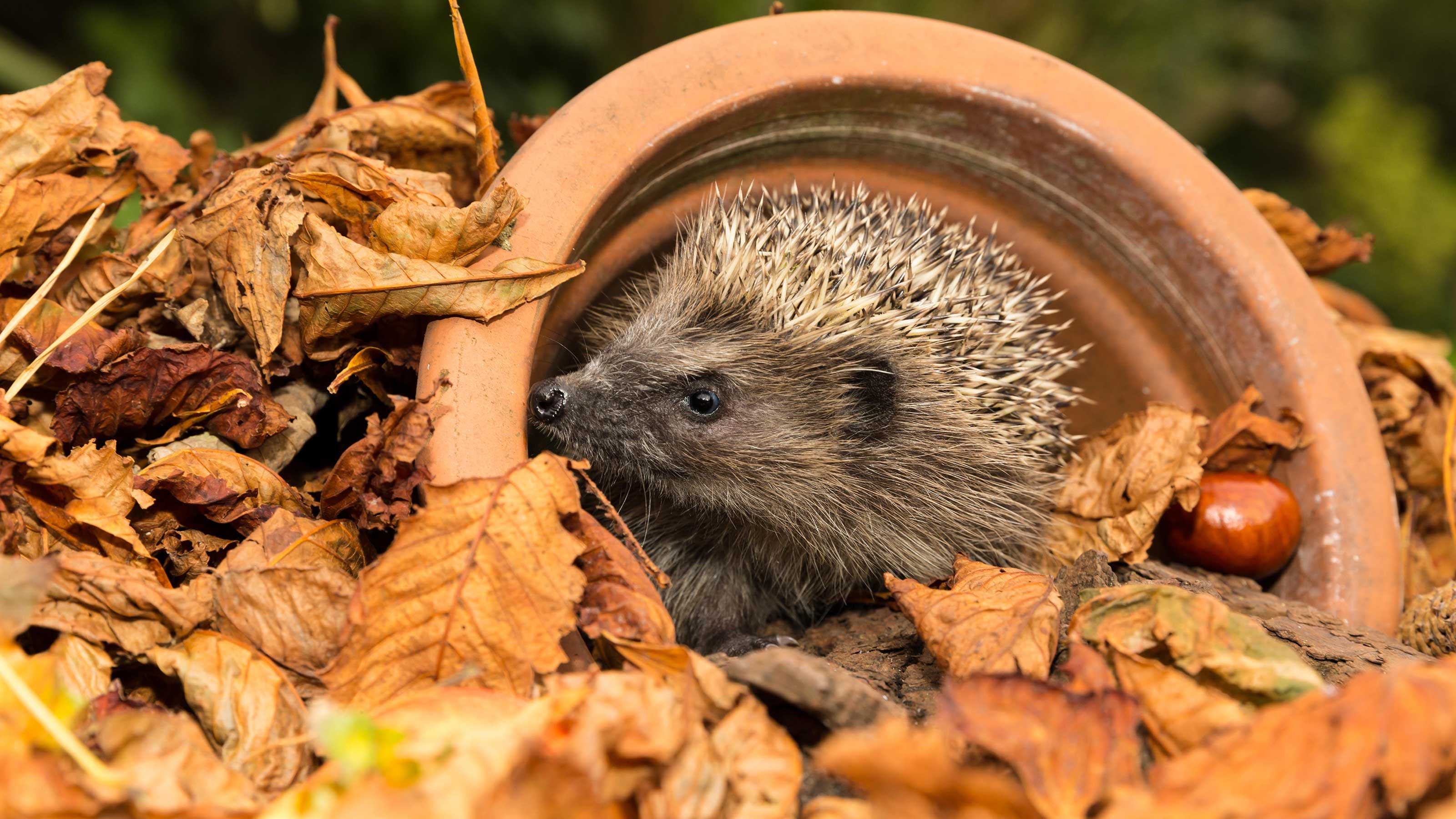

Would you like to know how to attract hedgehogs to your garden? These lovely creatures are happy to wander between fences and hunker down in piles of dried leaves, and they love snacking on various insects.
But hedgehogs are less likely to hang around a tidy garden – so now's the time to get rewilding. With a few small tweaks to your garden, you can make it an appealing and safe space for hedgehogs to seek shelter, hibernate during the winter, and perhaps even raise their babies in too.
Learn how to attract hedgehogs to your garden with these quick tips
A successful wildlife garden is one that welcomes lots of creatures, both great and small. From providing shelter and food to leaving piles of leaves for them to hibernate in, these are the best methods for attracting hedgehogs to your garden.
1. Set up a hedgehog house for their hibernation
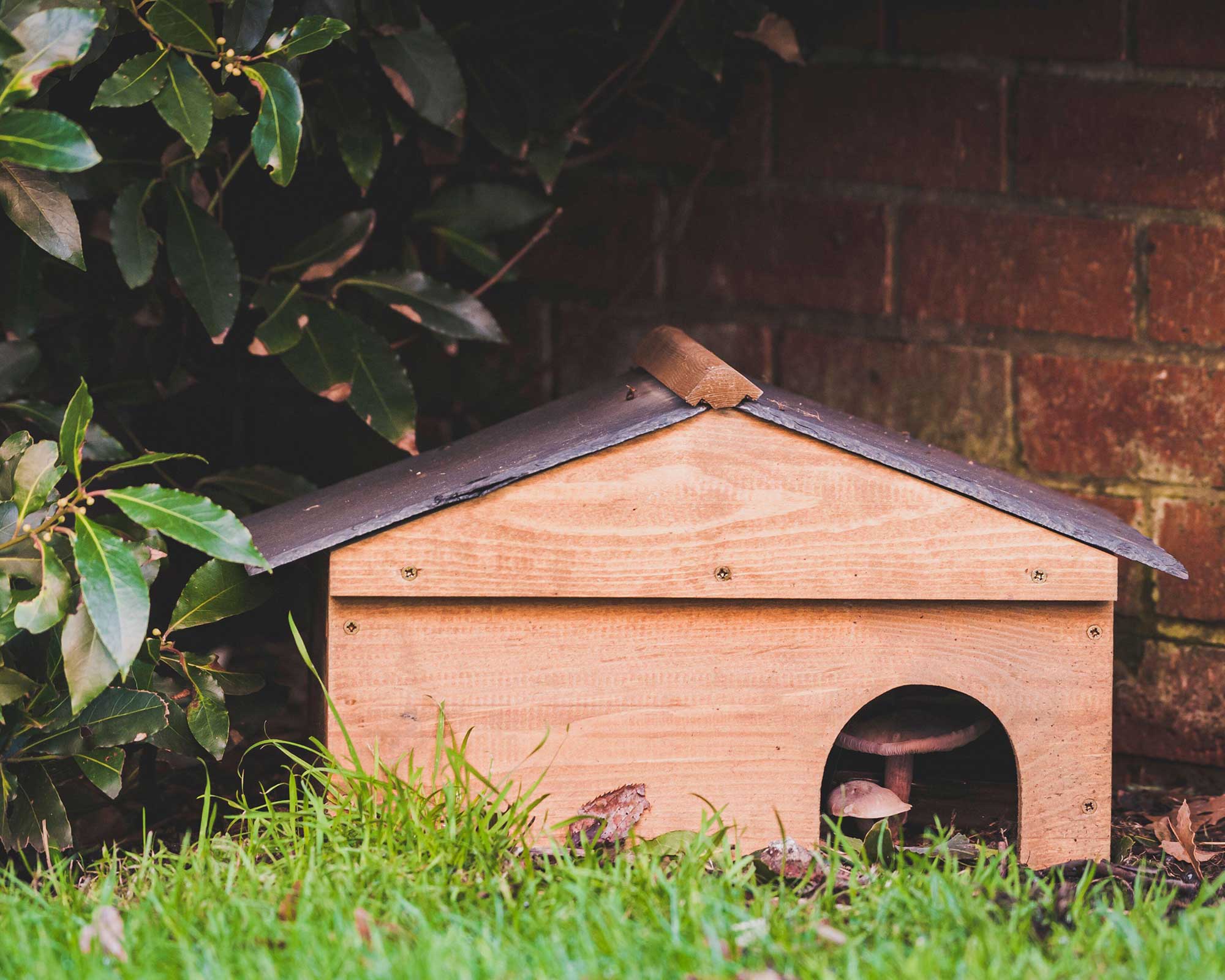
A hedgehog house provides a safe and cosy space for hibernation
Hedgehogs love to nest, particularly when they hibernate throughout the winter. You can make their hibernation season much more enticing by putting out a hedgehog hotel.
There are ready-made hedgehog hotels on Amazon which provide all they need, but as hedgehogs really like eating insects, using a specially designed bug hotel is a great option too. You can also place your hedgehog house near a compost heap to provide easy access to snacks, though it's more useful to situate it in an undisturbed spot like beside a wall or fence, and beneath plant cover.
If you’re making your own hedgehog hotel, all you need is a covered compartment like a box or container, some ventilation to allow moisture to escape, and a few handfuls of leaf litter and straw or dried grass for bedding. These materials also act as insulation to keep the hog house warmer on chilly nights.
'I made a simple hedgehog hotel in my garden from an old upturned plastic box, with a hedgehog-sized hole cut in the front of it,' says Gardeningetc editor Beth Murton. 'There are some logs in front of it to stop cats getting in, and then more logs and leaves surrounding it to stop any other animals lifting up the box and getting to the hedgehog. Our resident hedgehog has now been happily living in our garden for about three years, and we can often spot it wandering around at night.'
For a homemade hedgehog hotel, the RSPB recommends using wood that hasn’t been tanalised (ie treated with chemicals). Adding an ‘entrance corridor’ can help keep the hedgehog safe from predators such as badgers or foxes. If you build a particularly welcoming 'hotel', you may even find the hedgehogs using it as a nursery in the spring!
2. Establish a hedgehog highway
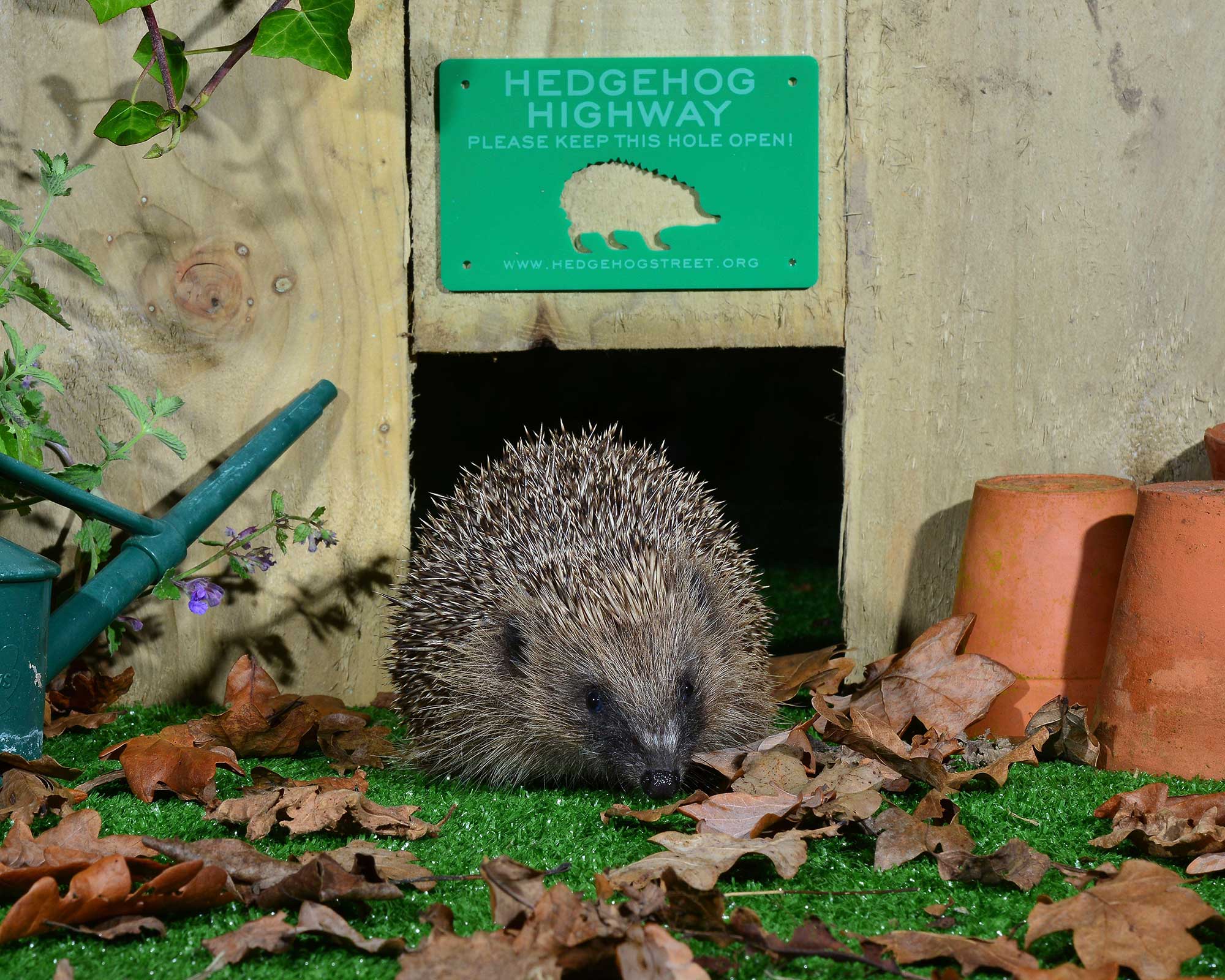
Help your neighborhood hedgehogs move between gardens
Hedgehogs don't do well if they're trapped in walled or fenced gardens: they need to ability to roam so they can feed and mate, and will typically travel a mile in a single night.
The conservation initiative Hedgehog Street is encouraging you to provide ‘Hedgehog Highways’ by making a hole in the fence to connect neighbouring gardens. This will hopefully reduce the number of hedgehogs being run over. So far, several thousand Hedgehog Highways have been mapped, and there are more than 115,000 Hedgehog Champions.
To help them out, all you need to do is create a small hole at the base of your fencing – either beneath it or in the fence or wall itself. The RSPB says that a 13x13cm hole is really all you need (about the size of your clenched fist).
These are actually a wonderful 'small wildlife' highway, as mice, frogs, and other little creatures can make their way through too.
3. Leave out some hedgehog-friendly food and water
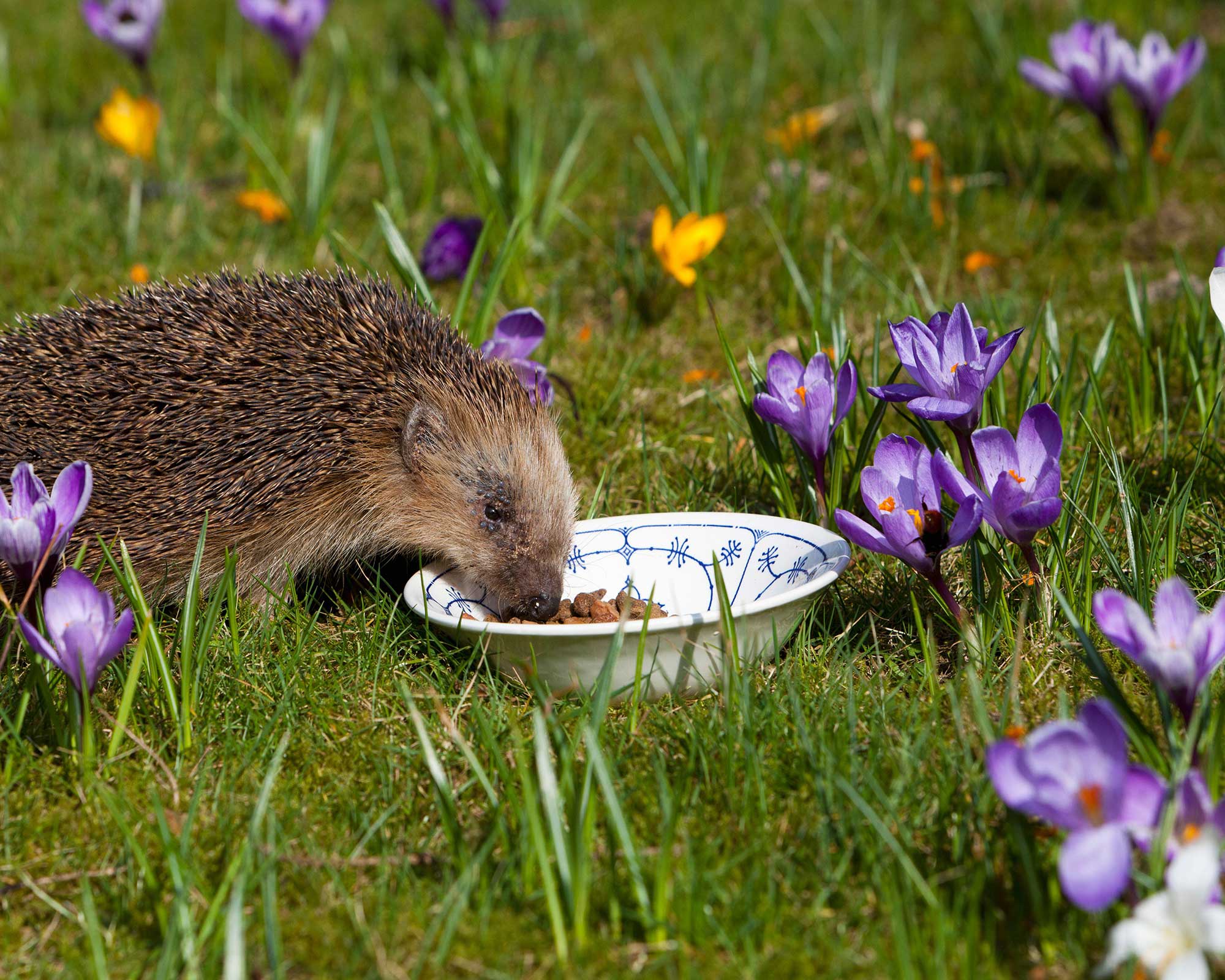
Hedgehogs will happily eat tinned dog or cat food. Don't forget fresh water too!
Like any other animal, hedgehogs need to eat and drink – and because they're nocturnal, they search out their food at dusk or early evening.
Leaving out some hedgehog-appropriate food around this time of night will help attract hungry hogs to your garden. As they have a naturally meaty diet, this can be tinned cat food or dog food, along with a saucer of fresh water, or crunchy food which is easily digestible, like Brambles hedgehog food, available from Amazon. Specialist food like this will help them to reach the right weight before hibernation, which is particularly important for hoglets born late in the season.
Bread and cow's milk can cause digestive issues in hedgehogs, so avoid leaving these out.
If you're keen on attracting birds to your garden as well as hedgehogs, adding a bird bath to give them a reliable water source year round is a good idea.
4. Leave some mess in the garden during winter
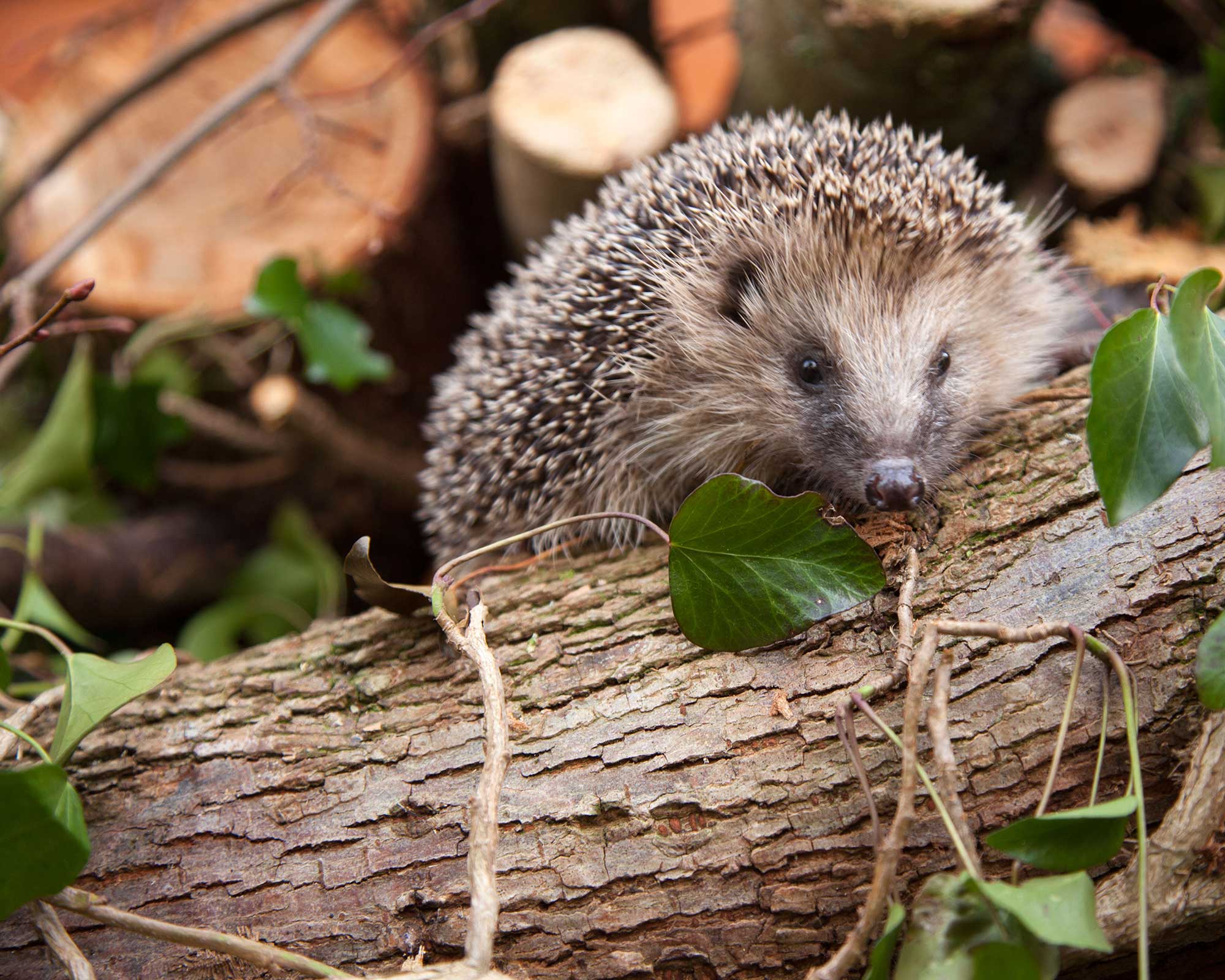
Hedgehogs like to rest in fallen foliage and shady spaces
Attracting hedgehogs to your garden doesn't require much effort - in fact, you can actively be a bit messy, as even once they've settled down for their winter hibernation, they might occasionally wander through the leaves!
Nick Hamilton, owner of Barnsdale Gardens, suggests leaving a small 'wild space' in a quiet corner of the garden, allowing a little bit of bramble and nettles to grow as hedgehogs like good, thick cover.
'They generally make their nests from smaller leaves, such as beech, hornbeam and oak, so when you're cleaning up leaves in autumn you could place any you have into your wild space. If you don’t have trees with this type of leaf then go to a public wood or forest to collect them,' Nick says.
Of course, hedgehogs only appreciate the natural waste in your garden. You should still make sure to keep your yard clear of manmade litter as part of your fall gardening checklist, and don't use netting as it can cause hogs to get tangled up.
5. Don't use chemicals in your garden
If you want to attract hedgehogs to your garden, it's advisable to stop using as many chemicals in your plot. According to the British Hedgehog Preservation Society, 'lawn treatments reduce worm populations, while pesticides, insecticides and slug pellets are toxic and reduce hedgehogs’ creepy crawly prey.'
Far better to stick to more organic gardening methods, and you'll probably find that once a hedgehog has taken up residence in your garden they will carry out your pest control for you, getting rid of slugs, beetles, caterpillars and many other types of insects that could cause damage to your plants and vegetable crops.
What are the signs of hedgehogs in your garden?
If you're unsure whether you've got hedgehog visitors or not, there are a few easy ways to check.
- First, look out for poo. Hedgehog droppings are usually either black or very dark brown, and are most likely to appear where they've been foraging.
- See if there's any disturbed patches where they might have been resting amongst the leaves and foliage. If you are composting in an area of your garden, check the compost piles as they are a favourite sleeping spot too.
- Hedgehogs also really like hanging out near log piles, as this decaying wood is where a range of insect life will be active. Crevices between the logs can also be a safe spot for nesting, so check your log store for signs of activity.

Freelance writer and author Flora Baker is a keen amateur gardener and houseplant enthusiast. Her small garden in South London is a constant work in progress as she gets to grips with snail prevention, DIY trellises and what to plant in shady spots overrun with ivy.
